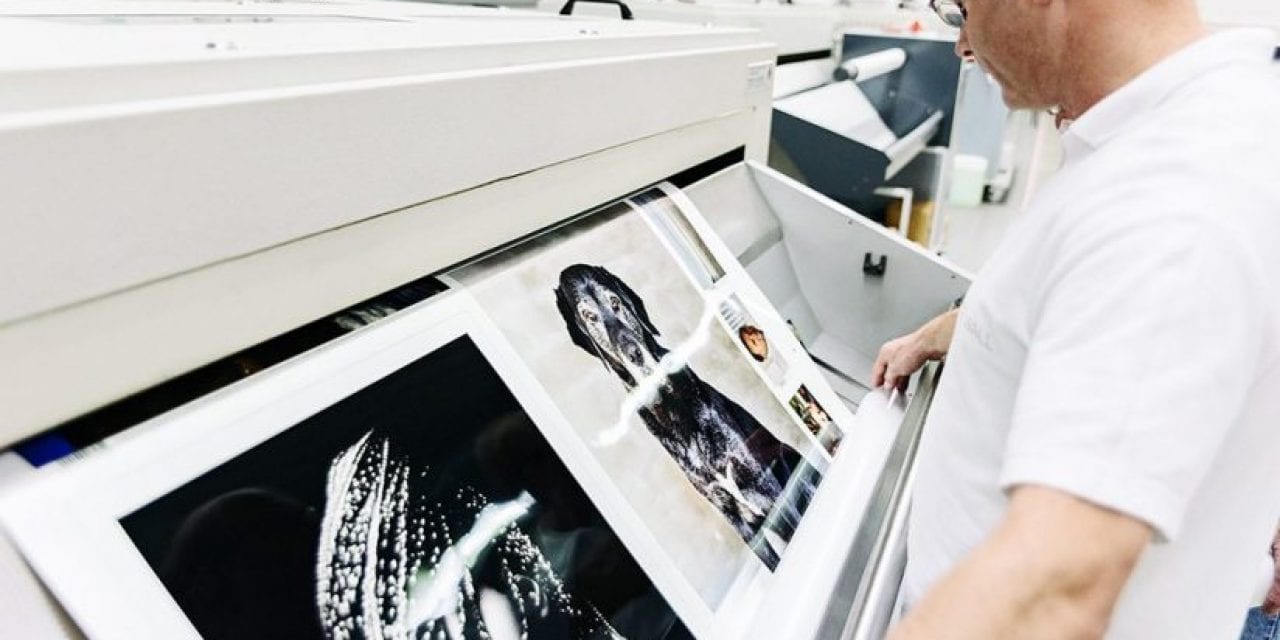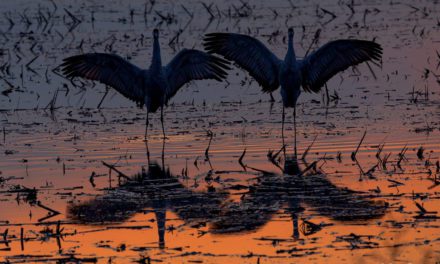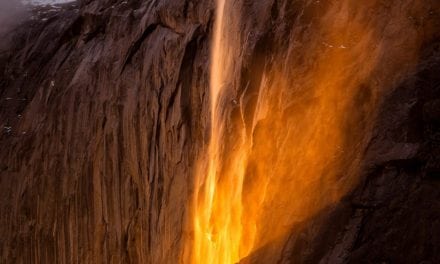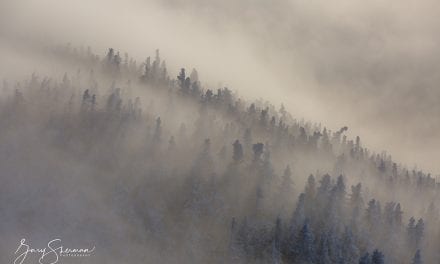Much like making a photograph, where you control lighting, exposure and composition, controlling the look and presentation of a print is an important step in the creative process. After all, the slightest shift in color or contrast can completely change the overall “feel” of a printed photograph. So why would you trust anyone but yourself with this task?
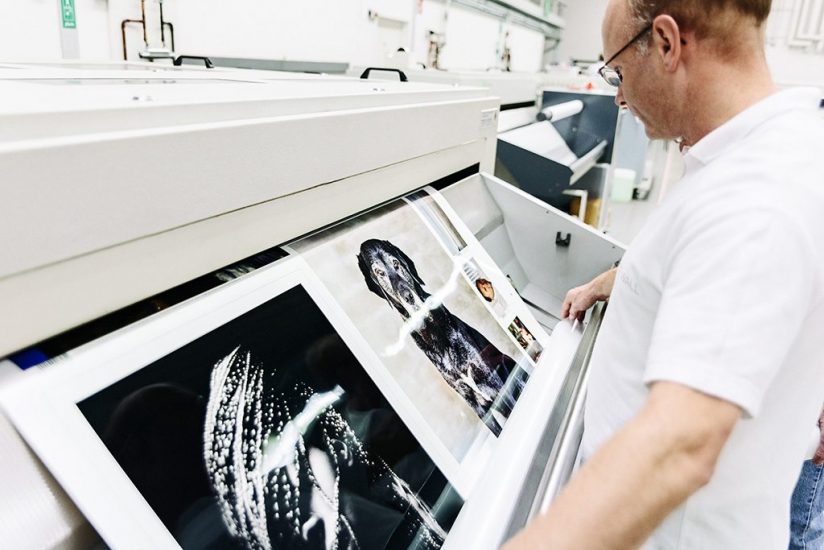
Though it can be difficult to give up a bit of creative control, high-quality photo labs will conduct extensive quality assurance checks. Photo courtesy of WhiteWall.
For this reason, many photographers continue to print their own photos at home or in the studio, which is totally fine, but this process also has its limitations in terms of maximum print size, print quantities and the inability to add unique finishes and substrates offered by professional photo labs.
Working with an online digital lab and trusting them to match your vision can create some anxiety at first, but it doesn’t have to be a stressful process. Here are a few tips to help you identify the right online lab for you and how you can ensure that they do an exceptional job, even by your own standards.
Do You Need The Services Of A Professional Lab?
The first thing to determine is what “level” of service you need. If you are making standard 8×10 or 16×20 prints you may not need the services of a professional photo lab. On the other hand, if you want to make much larger prints from a select group of files, create a gallery show or produce prints for a client, a high-quality online lab can offer a variety of print sizes, papers and substrates including traditional matting and framing. If you plan to make large prints for display or looking for a unique finish such as prints mounted under acrylic glass or on metal, a professional online lab is something to seriously consider.
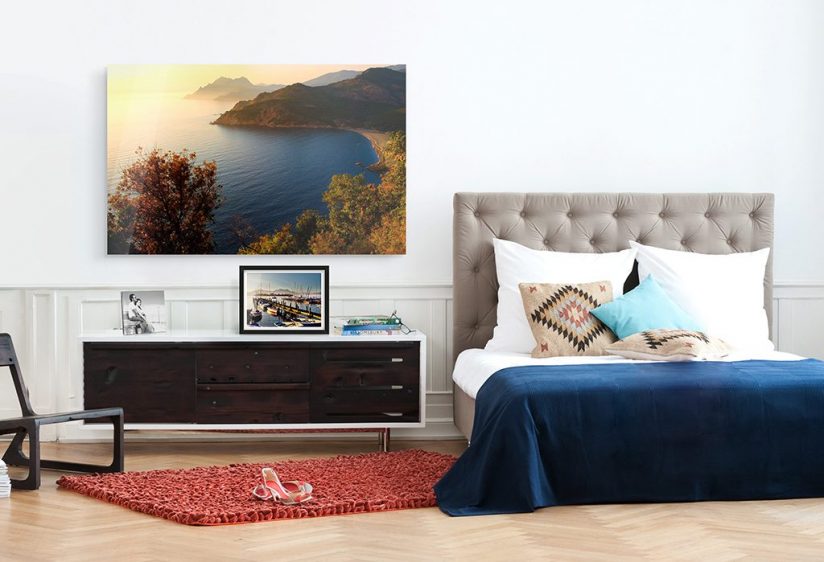
Large print sizes available from professional online photo labs transform your photos into striking statement pieces.
Image Resolution And File Types
Most online photo labs provide specific information and guidelines for image resolution and file types. Many labs, such as WhiteWall.com, publish a File Requirements and Resolution page which explains the maximum enlargement possible based on specific file sizes. Most labs will accept file sizes up to 1GB (per file), which is more than enough for most of us. In addition, most online labs will alert you when an enlargement you are requesting is too big for the image file size you provided before you place your order. In terms of file types, nearly all labs will accept common formats like JPEG or TIFF.
More is more. Since most labs will accept image file sizes up to 1GB each, create the largest file size you can, regardless of the desired print size. In the end, understand the limitations set by the file size. Many great photos worthy of print display have been created with a mobile phone. Just don’t expect to create a mural-sized print.
ICC Profiles And Paper Selection
Most photographers have experienced situations where image previews on their monitor do not exactly match the output from their printers. This may be caused by the monitor being too bright or not having the correct calibration or profile, or because of hardware limitations.
Precise color matching can be achieved by downloading ICC profiles provided by most online labs for viewing in Photoshop. In addition, different substrates such as acrylic glass and metal (discussed below) can affect the ICC profile. For example, the profile for a photo might be different for a traditional print versus the same print under acrylic glass. Most online labs take this into consideration.
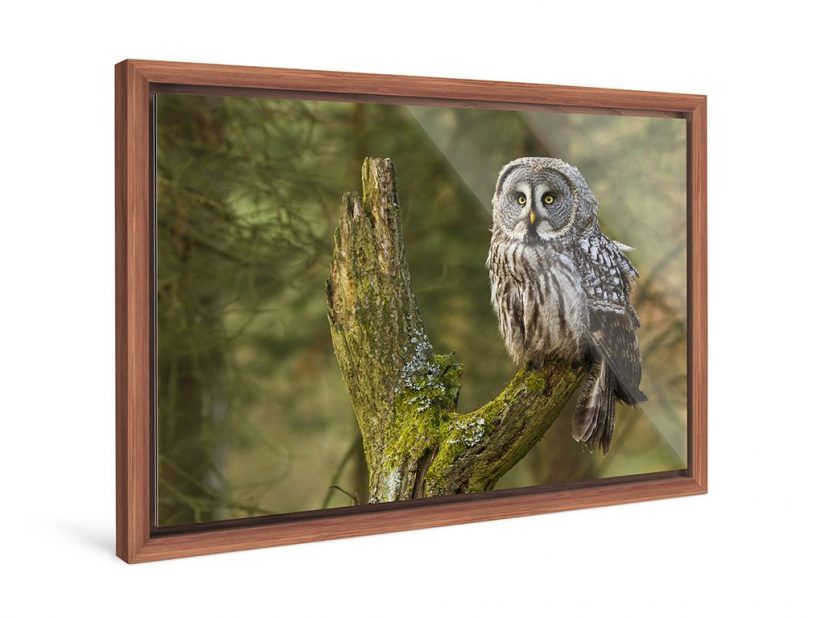
A glossy acrylic print with a floater frame from WhiteWall. The natural wood finish of the frame enhances the “woodsy” character of the image.
Download ICC profiles directly from the lab you plan to use. This way, you are guaranteed to have an exact match based on the specific paper products and substrates your lab offers. Labs such as Bay Photo, Miller’s Lab and WhiteWall all offer ICC Profiles for the papers they provide.
How Do You View Proofs If You Use An Online Lab?
If your computer monitor is properly calibrated, you can preview a “simulation” of the print results prior to ordering. This simulation is referred to as a “soft proof” in color management programs. A soft proof is understood as a colorimetric display of digital print data on a calibrated and/or profiled monitor. This procedure requires ICC display profiles (as described above), which describe the substrate to be printed in accordance with the material and color representation properties, and therefore allow a very accurate simulation on your monitor.
A soft proof not only allows a preview of the expected print results, but gives you an opportunity to make any color adjustments before placing your order. Soft proofing is typically done in Photoshop and most online labs provide step-by-step details about the process.
In addition, many online labs also offer “hard proofs,” or actual test samples of your order, if you prefer to physically see the results you can expect to receive when placing your final order.
Calibrate your computer screen so you can view “soft proofs” of your prints before you actually order them. If you prefer to see “hard proofs,” confirm that the lab you plan to use offers this service.
What Materials And Substrates Work Best?
If you’re a newcomer to the expanding world of online print options, it’s easy to be overwhelmed by the large selection of materials you can print your images on. Whether it’s acrylic glass, aluminum, wood or something entirely different, the question remains, “Which substrate complements an image to make it look its best?”
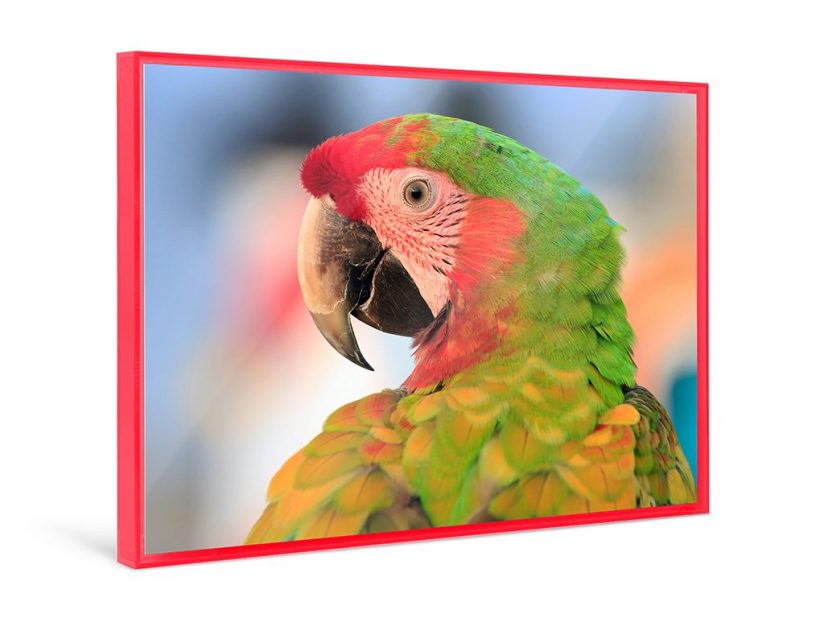
Bold color choices for frames can accentuate the colors in your photographs, as with this ultraHD print on aluminum with a “pop art” frame from WhiteWall.
Online labs provide a complete list of papers they offer, along with a description of each paper’s attributes and examples of subject types that are best suited for each (landscapes, portraits, high-contrast, B&W, etc.). Selecting the appropriate substrate takes a bit more care, especially when making a selection from your one-dimensional computer screen.
Metal Prints. There are a number of options available for printing on metal, including aluminium. Using aluminum as your substrate will provide a high-end, contemporary look to your photos and work especially well with high contrast images because highlights are not printed, which allows the texture of the metal to be visible. Bay Photo creates exceptional metal prints for wall display and also offers “EXT Metal” prints for outdoor display. The prints are extremely durable and weather-resistant and a great option for decorating extended living areas such as outdoor patios and decks as well as bathrooms and kitchens where heat and humidity are prevalent.
Photos Under Acrylic Glass. Photos mounted under acrylic glass provide a real touch of elegance to your photos and create an added ‘brilliance’ to the final print and among. Although WhiteWall.com offers numerous substrates and printing services, Photos Under Acrylic Glass are this lab’s signature product. The material is durable and adds depth to your photos. The thicker the acrylic, the more intense the effect. Architecture, underwater photography, portraits, night photography and colorful images of nearly any subject look spectacular under acrylic glass. The photo print is sealed by hand under a 1/16”, 1/8” or 1/4” thick pane of high gloss acrylic glass using a long-lasting elastic silicone. The advantage is that the silicone will never harden completely and adjusts to changes in temperature to avoid any flaws or disfiguration, which is why the company guarantees it for 75 years for vibrancy and UV protection.
Tools, Templates And Promotional Services. There are several online photo labs around the world that offer an enormous selection of high-quality products and unique services as well as traditional matting and framing and canvas prints. Miller’s Lab, which began servicing wedding and portrait photographers in 1964, expanded to provide services to all photographers from amateur to professional. The variety of printing services, online templates and marketing and promotional products offers one of the largest selections in the industry. Prints, framing, books, albums and a wide selection of printed cards is what gives photographers great flexibility from a single source.
The bottom line for choosing print surfaces and substrates: Review the list of products each lab uses and the type of subject best suited for each. Most labs provide recommendations for the type of images that look best with each substrate such as acrylic or metal. Based on this information and the result you want to achieve, selecting the right surface and substrate combination can be relatively easy and a whole lot of fun.
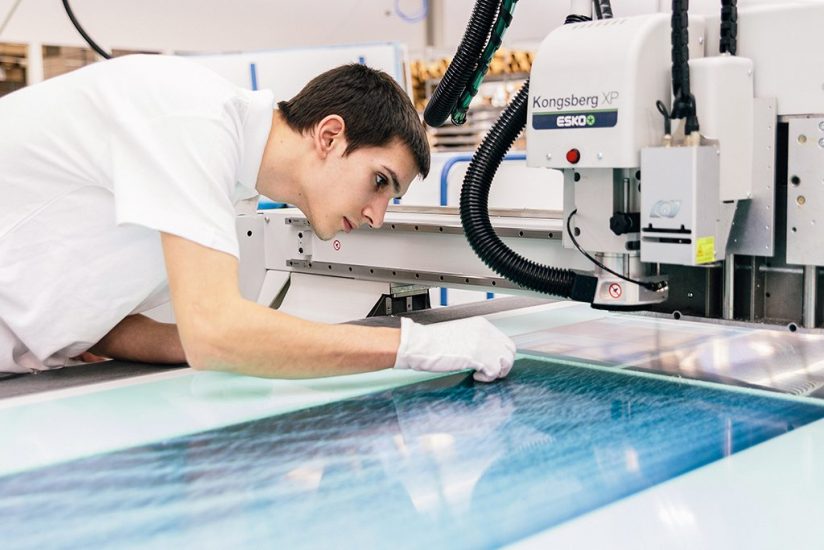
An online photo lab’s team of technical pros can be valuable creative partners in bringing your photos to life. Photo courtesy of WhiteWall.
Relinquishing control of the print process can be difficult, but once you make that initial commitment and finally “let go,” you will feel a sense of liberation and even get excited about the next time you place an order. In the end, it’s all about exploring the creative opportunities available through online photo labs. Do some research, read reviews, look for interesting alternatives online labs offer and go with your gut. Most online labs have great customer satisfaction policies so you really won’t have anything to lose by giving it a shot.
The post Working With An Online Photo Lab appeared first on Outdoor Photographer.

